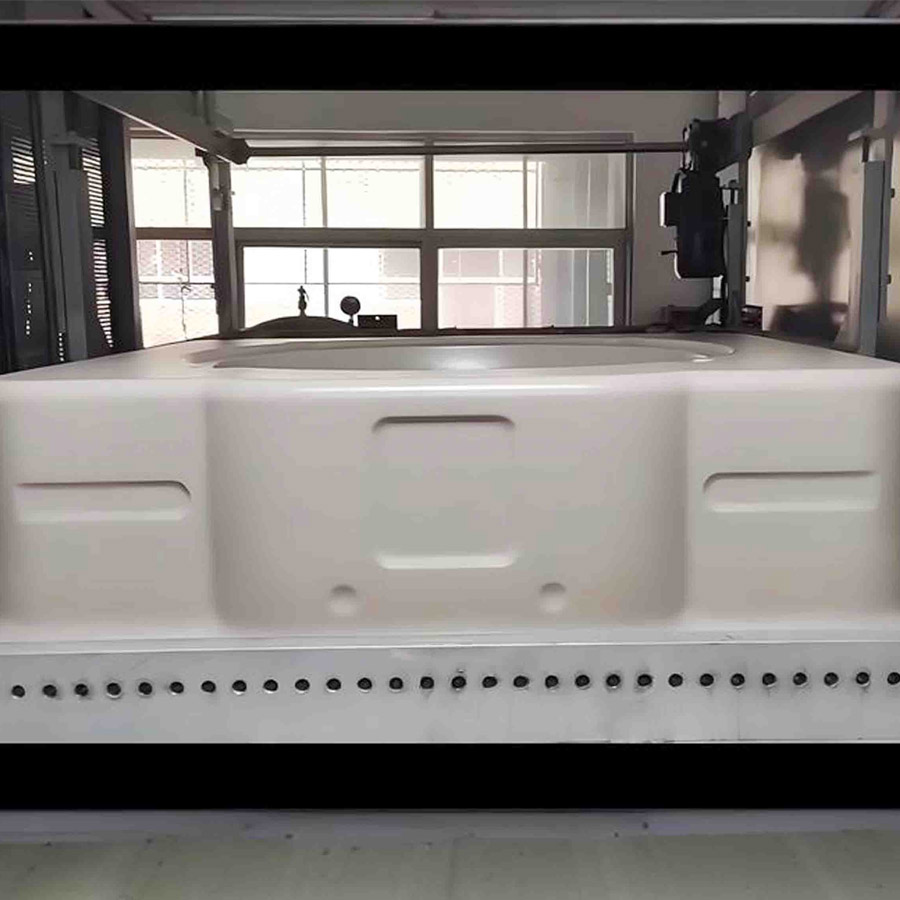- Home
- Capability
- Products
- About Us
- Service Industry
- Service Cases
- Video
- Contact Us
-
Language

2025-03-13 11:41:38
Introduction
The plastic thermoforming process is a versatile manufacturing technique that transforms thermoplastic sheets into a wide range of products, from simple packaging to complex industrial components. This process combines efficiency, cost-effectiveness, and flexibility, making it a preferred choice across various industries. In this article, we will explore the intricacies of the plastic thermoforming process, including its types, materials, applications, and advantages.

What is Thermoforming?
Thermoforming is a manufacturing process where a thermoplastic sheet is heated to a pliable temperature and then shaped using a mold. The process can be applied to both thin and thick plastic sheets, allowing for the production of diverse products such as cups, containers, trays, and even large items like car doors and refrigerator liners.
Types of Thermoforming
Vacuum Forming
Vacuum forming is one of the most common methods in thermoforming. It involves heating a plastic sheet and stretching it over a mold using vacuum pressure. This method is cost-effective and suitable for producing products with simple shapes, such as packaging and basic household items.
Pressure Forming
Pressure forming utilizes compressed air to press the heated plastic sheet against the mold. This technique is ideal for creating products with intricate details and sharper edges, making it suitable for automotive parts and high-tolerance industrial components.
Mechanical Forming
Mechanical forming employs mechanical tools to shape the plastic sheet within the mold. This method is often used for producing heavy-duty items and industrial parts that require high strength and durability.
Material Selection
The choice of material is crucial in thermoforming, as it directly impacts the final product's properties. Common materials include ABS, PETG, HIPS, and polystyrene, each offering distinct characteristics such as strength, flexibility, and chemical resistance.
Process Steps
Heating
The plastic sheet is heated to a temperature where it becomes pliable. This is typically done using infrared heaters or convection ovens to ensure uniform heating.
Forming
The heated sheet is placed over or into a mold and shaped using vacuum, pressure, or mechanical means. The mold can be either male or female, depending on the desired product shape.
Cooling
After forming, the plastic sheet is cooled to solidify its shape. This can be achieved through air cooling or water-cooled molds, ensuring the product's stability and durability.
Trimming and Finishing
The final step involves trimming excess material and adding finishing touches such as sanding, polishing, or drilling to meet specific product requirements.
Applications
Packaging
Thermoforming is widely used in packaging for food, pharmaceuticals, and consumer goods. It produces items like clamshell packaging, blister packs, and bottles.
Automotive
The automotive industry utilizes thermoforming for interior components like dashboard panels, door liners, and bumper reinforcements, leveraging the process's ability to create lightweight yet durable parts.
Aerospace
In aerospace, thermoforming contributes to the production of lightweight interior panels and cargo liners, crucial for fuel efficiency and structural integrity.
Medical Equipment
Thermoformed plastics are used in medical devices such as diagnostic machine housings and sterile packaging, benefiting from the process's precision and hygiene.
Advantages
Cost-Effectiveness
Thermoforming generally has lower tooling costs compared to other plastic molding techniques, making it economical for both small and large production runs.
Design Flexibility
The process allows for the creation of complex geometries and custom shapes, providing designers with greater freedom to meet specific product requirements.
Sustainability
Many thermoforming companies focus on sustainability by recycling scrap materials, reducing waste, and using environmentally friendly practices.
Challenges and Solutions
Material Waste
Excess material from trimming can lead to waste. Implementing efficient nesting techniques and recycling systems helps minimize this issue.
Complex Shapes
Achieving uniform thickness in complex geometries can be challenging. Advanced mold designs and multi-zone heating systems are employed to address this.
Future Trends
Lightweighting
The demand for lighter components will drive innovation in materials and processes, leading to thinner, stronger plastic sheets.
Automation
Increased automation in thermoforming processes will enhance production efficiency and quality consistency, reducing manufacturing costs.
Conclusion
The plastic thermoforming process is a dynamic and versatile manufacturing method that continues to evolve with technological advancements. Its ability to produce complex, lightweight, and cost-effective components makes it indispensable in numerous industries. As sustainability and automation become increasingly important, thermoforming is poised to remain a key player in plastic manufacturing, driving innovation and efficiency across the board.